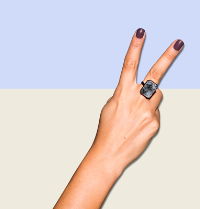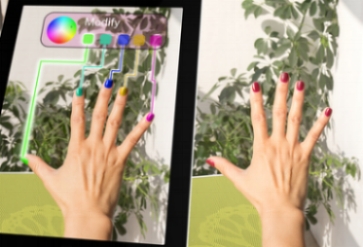The advancement of technology is changing fashion – in how it is created, thought about, and responds to user demands. Since the digital revolution of the 2000s, fashion has undergone a significant change. Technology is now a fashion statement. Today, fashion and technology share a symbiotic relationship – fashion relies on technology, as much as technology relies on fashion to evolve and meet user demands. Let’s talk a look at some of the ways technology has changed the face of fashion:
Techstyles
First up: techstyles – pun intended – also known as wearables. They have become comfortable and fashion forward thanks to advancements in biotechnology, nanotechnology, and 3D scanning techniques. A great techstyle example is Ringly. Ringly creates chic bracelets and rings that connect to your phone via Bluetooth. The jewelry alerts you of phone notifications through customizable vibration sequences and subtle color changes.

Personalization
Personalization in the shopping industry for individual users is becoming a reality. Stores like Macy’s are now creating individualized experiences for shoppers through in-store shopping assistants powered by artificial intelligence. Shoppers can ask questions and receive customized answers from the shopping assistant – something previously only dreamt up in futuristic movies and TV shows. The more interaction customers have with the in-store shopping assistants, the smarter the selections the technology makes.
Voice-Based Interfaces
Voice-based interfaces such as Siri, Ok Google, and Alexa are all about frictionless experiences. They increase efficiency and convenience for users. Users ask questions and are taken to the web pages that best correspond to their question. Instead of going through the traditional inbound marketing process, one simple stream of conversation gets a customer to the purchasing phase. This gets rid of the need to click through a website.
Clothing websites can be overwhelming for users because of the sheer amount of choices available. The ability to ask Siri, or Alexa, etc. to find a blue cocktail dress in size 8, simplifies the shopping experience, making it more likely for customers to return.
Augmented Reality
Augmented reality is already used in the fashion industry for fashion shows, brand storytelling, and in the realm of beauty for immediate try-ons. A super fun example of augmented reality is inside the Sephora app – the Virtual Artist service where you can virtually try on over 100 million shades of different products. In 2016, the app has expanded to include Live 3D tutorials and much more. Augmented reality will only increase in use in 2017.

So what does this mean for digital marketers?
Digital marketing is changing and personalized experiences are becoming crucial to stand out in the crowd. Adding personalization to our clients’ web presence through the use of chatbots, artificial intelligence, and social media leads to more intelligent customer service.
“Live” strategies on social media give clients’ customers an inside look of the brand, making customers feel included in its behind-the-scenes workings. But as with all new trends, the quicker one gets in on the action with quality content, the better chance of gaining a competitive advantage.
It is becoming clear that quality content in entertainment, education, and community is the future of marketing. Creating memorable and personalized experiences for users makes them want to come back again and again.
As digital marketers, we need to acknowledge that the fashion industry is setting the trend for how technology is used in everyday life. From augmented reality fashion shows to jewelry that notifies the user of a text message, it is clear fashion is leading the way in how technology will be used by all industries in the near future.
Interested in learning more about the relationship between fashion and technology? Check out the blog Fashion and Mash.

